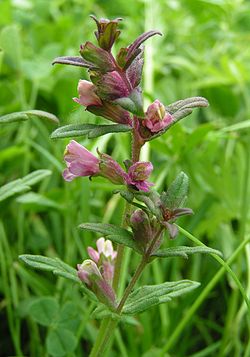| Odontites | |
|---|---|
 | |
| Red bartsia (Odontites vernus) | |
| Scientific classification | |
| Kingdom: | Plantae |
| Clade: | Tracheophytes |
| Clade: | Angiosperms |
| Clade: | Eudicots |
| Clade: | Asterids |
| Order: | Lamiales |
| Family: | Orobanchaceae |
| Tribe: | Rhinantheae |
| Genus: | Odontites L. |
| Species | |
Odontites is a genus of flowering plants in the family Orobanchaceae.